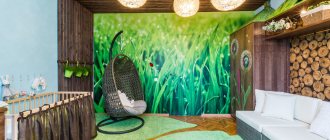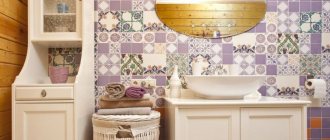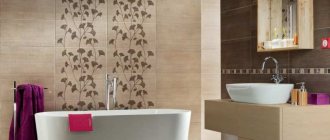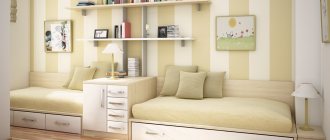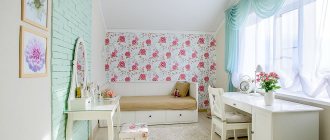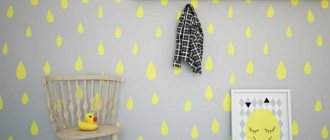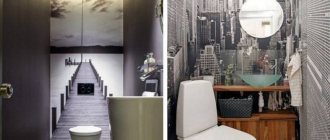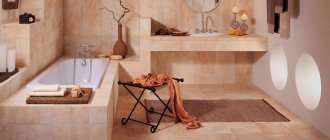Photo: uutvdome.ru Properly arranging a children's room is not easy, the task becomes even more complicated when we are talking about children of different sexes. After all, it is the parents who must foresee all the options in advance and make sure that the kids get along well in the same area. And so that everyone feels good and comfortable!
Territory in half
The main difficulty in designing a nursery for children of different sexes is not to offend anyone. Therefore, think about how to delimit the territory for two. Having your own space is especially important at a young age. After all, it is at this time that the perception of the outside world is formed and relationships with it are built.
Parallel zoning
An excellent scheme for spacious, and best of all, square rooms. Although you can think of an elongated room: you just need to experiment with the layout and location of windows and doors.
The room is simply divided in half. To do this, use a closet, rack, partition, curtains. The color scheme of both parts may differ. To prevent the nursery from looking too tacky, leave the general style, background or accents. For example, plain walls or beds of the same model, but with different colored textiles.
Diagonal zoning
Diagonal zoning differs from parallel zoning only in the location of the partition. This scheme is suitable for rooms with two windows on adjacent walls.
Diagonal division of the nursery is convenient to use in private houses or corner apartments.
Common areas
This division involves two separate sleeping places and common areas for games. This is convenient for small children of different sexes of about the same age. They happily play together, and cribs are enough for them to have privacy.
But when children grow up, problems may begin. You will need at least two separate workstations and two storage spaces.
Decoration
To decorate a shared children's room, you can use various carpets and pillows that match the design of the room. For small children, it is especially necessary to have a variety of toys: plastic, plastic, soft plush. The right curtains will help give a finished look to a child's room. Curtains should be selected in the same style of the children's room, should be of good quality and easy to care for.
It is advisable that they do not darken the room, because children need good lighting. In this case, a combination of tulle and thick curtains will be convenient.
Also, Roman shades or blinds are well suited for a children's room. The material for curtains should be environmentally friendly and should not become very dusty. Cotton and linen fabric are ideal.
Bathroom design in Khrushchev.
Catalogs of Russian-made ceramic tiles are presented here.
Design of a small narrow room with photo: https://trendsdesign.ru/home/kitchen/osobennosti-proektirovaniya.html
Methods for zoning a children's room
Designers have long come up with many tricks for zoning rooms. You don't even have to “reinvent the wheel.”
Mobile partitions
Mobile partitions are the simplest tool for zoning. For example, folding screens. They can be removed during the day, and put back in at night or for classes.
Such partitions also differ from stationary structures in that they are visually lighter. This means they look less bulky in small rooms.
Plasterboard structures
From plasterboard you can create structures of any complexity and configuration: from lightweight interior walls to elegant semi-arches or low racks.
Plasterboard structures, unlike mobile partitions, cannot be folded or removed. But they have another advantage: you can build a whole storage system for things inside. And use the surface of low partitions instead of a table or shelf.
Cabinets and shelving
Now there are a lot of furniture options suitable for dividing a room. Of course, these are not bulky wardrobes in the ceiling. But racks with shelves for books and cute little things look lighter and immediately give the nursery a certain style and mood.
Pay attention to modular designs. Especially those that have access from two sides. They can easily replace a closet, chest of drawers or pencil case. And in modern interiors they can be played out in an interesting way with the help of decorative lighting.
Curtains
Thick curtains are usually built into the ceiling instead of a partition. More precisely, the cornice is mounted into a plasterboard structure. But this also has its advantages and disadvantages.
The advantage is that the curtains are easy to close and open as needed. They can always be removed for washing or replaced with new ones if children want to refresh the interior.
Disadvantage: textiles attract dust, get dirty easily and are a fire hazard. This is not the best option for small children. So first weigh the pros and cons.
Visual zoning
Visual techniques include zoning with materials, colors and textures. This also includes podiums and ceiling structures.
But in the case of dividing a children's room for children of different sexes, it is better to use such tricks as an addition, and not as a basis. Light and color alone can change the perception of a room, but not create two private corners.
But with the help of a podium and lighting, you can perfectly highlight a play or work area.
Color harmony
In any interior, the basic tone of the walls is important, but in a situation with a nursery you should be extremely careful. Neutral shades are selected for teenagers' rooms. In finishing, the opinion of psychologists must be taken into account.
Too much of one color in a room can lead to hyperactivity or contribute to the development of depression.
Using several shades in the design of a children's room helps to divide the space. Therefore, zoning should be done, including using different colors:
| Color | Peculiarities |
| White | Has minimal impact on the child's psyche. Helps to calm down and improves well-being. An abundance of light can cause depression, so it is recommended to use it as a background design with accents of bright colors |
| Red | Increases activity. Suitable for the play and work area of a children's room. But it should be used sparingly, as this color can increase aggression |
| Orange | Stimulates creativity and creates an atmosphere of psychological comfort. In large quantities it leads to overexcitation and has a depressing effect on the child’s psyche. |
| Yellow | The color of the sun improves emotional mood, stimulates mental activity, promotes concentration and the development of intuition. For active children, the amount of yellow in the room should be limited to avoid excessive disturbance to the child. |
| Grey | Reduces activity, calms, gives self-confidence. In a small space it can have a depressing effect and cause feelings of loneliness |
| Green | It has a relaxing, calming effect. Suitable for decorating a children's room recreation area. Excess color can make you feel worse |
| Blue | Dispels attention, relaxes. Use limited to relaxation areas |
| Blue | Helps improve sleep, relieves nervous tension. Among the negative aspects: it reduces the emotional mood, relaxes, makes you sad. In the design of a nursery it is used only as an accent |
| Violet | Ambiguous color: increases creative activity and stimulates thought processes, but too much can lead to a dream world and develop a feeling of insecurity and loneliness in the baby |
Expert opinion
Olga Kovalenko
Since 2010 I have been engaged in interior design and architectural design.
Designers advise abandoning cliches in the design of rooms for teenagers, such as blue for boys, pink for girls. Despite all the attractiveness of zoning, such standard solutions significantly reduce the area for the implementation of their own teenage ideas.
There are colors whose use in a nursery should be minimal. Brown, especially in a dark, rich color, quickly tires and reduces emotional mood. And black color worsens mood at any age. A child’s desire to surround himself with dark things speaks of his mental imbalance.
Bed installation
The most difficult thing in a nursery for children of different sexes is to separate the sleeping places. For small rooms, bunk beds or modern transforming systems are suitable; they take up less space.
But if space allows, it is better to divide the sleeping areas more clearly, because the older the children get, the more they need their own corner.
In an elongated rectangular room, try placing beds against one wall and placing a mobile or sliding partition in the middle. Or build a curtain rod into the ceiling structure.
The easiest way is to install beds against opposite walls. And in the center of the room there will be a common area that the children themselves can share when they need it.
A convenient option is modern transformable furniture. In one such complex there will fit a bed, a table, and shelves with cabinets for storing things. Then in the rest of the room you can safely install a sports corner, a TV with a console or any other entertainment.
80 design ideas for a small children's room (photo)
Ideas
The smaller the area per person, the more difficult it is to design, the more important all sorts of clever tricks and ideas become.
Storage locations
Some toys for a boy and a girl will overlap, others will be personal. Things are all different, which means that in a nursery for two you need a lot of storage space and they must be separated. If you've given up on a bunk bed, it's a good idea to make use of the space underneath it. You can either place drawers under it, or make a full-fledged closet by raising the bed to the 2nd level.
In general, vertical zoning is the main design tool for a nursery. Two children - a lot of things. We are trying to make cabinets, shelves and drawers everywhere we can reach.
The problem with storing toys is that children often want a specific one and turn everything upside down until they find it. An interesting solution is transparent containers. They don't look as neat as cabinets and shelves, but they fit more and are easier to search through.
A good option for a real nursery, where the furniture is planned correctly:
Correct lighting
The right light is especially important for children's growing bodies. Moreover, kids are engaged in creativity, reading, studying, and doing homework. Therefore, you need to approach the organization of lighting no less carefully than choosing a bed or workplace.
Natural light
The best light is always natural. That is why the brightest room is traditionally chosen for children's rooms. Ideally, with windows facing east or southeast.
Sunlight affects the entire lifestyle of children, their emotional background, vigor and performance.
Even curtains for the nursery are recommended to be light, airy and transparent. And at night, if necessary, lower thick roller fabrics, like Roman blinds.
Artificial lighting
The current trend is multi-level lighting. This is especially valuable in a children's room.
— A bright overhead light is suitable for the play area. It is better to place the central chandelier above it. If this area is located in a corner, two-tier plasterboard ceilings with built-in spotlights will solve the problem.
— The middle level is shifted diffused light above the sofa, computer desk, or near the TV.
— The third level is working lighting. These are tabletops and swivel sconces above the desktop. It is important to think through this area so that children do not interfere with each other.
— Don't forget about the light above the bed. Choose soft, adjustable lamps for this. Especially when there are two children in the room. This way, one of them can, for example, read a book in bed without disturbing the other.
Power and brightness
Calculate the power of the lamps based on the following considerations: 10-15 Watts per square for the entire room, 50-60 Watts per square for the work and play areas.
Don't forget about color temperature. There are two types of light bulbs used for living rooms:
- At 3000-4000K. This is a warm yellowish light for chandeliers and wall lights in living rooms; - At 4000-5000K. This is a neutral background for functional rooms. It is used instead of daytime.
Lamps up to 3000K produce warm orange light. It's cozy for evening gatherings, but not suitable for everyday activities. Temperatures above 5000K are bluish white lamps, as in museums, hospitals, laboratories, and shops.
Selecting furniture
The organization of a sleeping place is central to the design of a children's room.
When choosing a children's bed, you need to take into account such qualities as safety, convenience, functionality. It must be suitable in size, and it must have a high-quality orthopedic mattress.
For children of different sexes, you can also use a bunk bed. It will provide the possibility of a closed space, besides, such a bed is very interesting for children, who are always curious about all sorts of unusual things, and lifts their spirits.
In a large room, you can order two beds, which are located at the height of the second tier. This will make the design of the children's room extraordinary, and it will also be very popular with children who love everything unusual. The space under the beds can be rationally used for other areas.
To arrange the play area, you can use a variety of play furniture designs. They can be inflatable, wooden, plastic, and resemble a princess castle, ship, or tree house. Children especially love furniture with mezzanines and additional levels.
Installing a sports corner in the play area is very popular.
Installing a wall bars will add originality to the design of a children's room and will bring joy to children, as well as encourage them to engage in physical exercise and keep themselves in good shape.
To prepare lessons and study, it is necessary to install a desk in the room. It is advisable that each child have their own separate table if they are the same age. This will eliminate many conflicts and disputes among them and allow them to prepare their homework carefully. The desk should be appropriate for the child’s age and should not have sharp corners.
In the children's room you can also put wardrobes, chests of drawers, various racks and shelves for arranging children's toys, fakes, and educational books.
It is advisable to exclude huge mirrors, glass tables, crystal chandeliers, and fragile decor from the children's room, as they can be potentially unsafe for children.
Also, it is better not to clutter the children's room with a large number of carpets and soft toys. They accumulate a huge amount of debris, dust and dust mites, which is unsafe for the health of children.
Color solutions
Each child is an individual with his own tastes and preferences. Naturally, children may like different colors and styles. Interests begin to form at the age of 3-5 years.
common topic
If a compromise has been reached between the children, the easiest way is to decorate the room in one color scheme. This will simplify the selection of furniture, textiles and parts.
Remember that children's preferences can change quickly. Therefore, for such global decisions, it is better to choose neutral themes that can be easily refreshed or changed with small details and accessories.
Simple modern interiors, natural, marine or space themes, laconic technological styles - be sure to consider these options.
Monochrome
You can visually divide a room even within the same color. For example, decorate one part of the room in darker and richer emerald shades, and the other in pastel light green or bleached khaki.
Natural textures and colors look very stylish in this interpretation: wood, sand, brown shades. And children will create accents for themselves with the help of their favorite toys, crafts and decorations.
Contrasts
To separate the room of children of different sexes, you can use completely different colors. But don't forget about color. And that the child’s psyche is sensitive to visual stimuli.
Choose different shades, but not too loud or harsh. For example, purple with gray, brown with green, yellow with blue.
How to choose wallpaper for a children's room: 85 photo ideas
Room for a boy and a girl: design features and design
If your children are around the same age, play together and enjoy spending time together, carefully designate two areas of the room. You will do this with flowers! Use one type of flooring, but two colors of wall covering - both paint and wallpaper will work. Children will feel like the room has a special place for each of them, without any type of decoration interrupting their play.
You can paint the brothers' room in two shades of the same color - blue and navy are great, for example. You can easily match furniture and accessories to these colors - in any shade of wood or in white. Each of the boys likes different sports, or maybe they support different football clubs?
Accentuate it with additions like athlete posters, sako ball ottomans, and favorite team jerseys tucked into a frame to give the brothers' room some original character.
In the sisters' family room, you can also use one color in two shades - the perfect combination of mint and aquamarine . The difference between the shades is small, but noticeable. You can also use a non-obvious combination of mint and pale pink - these two shades go well together. For a more interesting effect, use pink additions in an area with light green walls and vice versa.
Do you prefer covering your walls with wallpaper? With them you can also separate a girl's and a boy's room with wallpapers of different colors, and you can also choose a finish in the same shade but with a different motif. Use calm colors so that original patterns do not overwhelm the room - this is especially important if the siblings' room in the apartment is not too large.
For kids, choose pastel wallpapers, which are becoming more and more popular. Use a shade of soft blue. If you are arranging a room for children of different genders, bet on models that will highlight the interests of your children. You'll create a beautiful room layout by choosing to wallpaper parts of the walls in the shape of little cars, and apply a woodland animal finish to the remaining surface.
If you decide to combine two wallpaper designs, then it is better to avoid too many additions. Remember that there will also be toys in the interior, which are usually extremely colorful. Hang bright curtains, bedding in subtle colors and white furniture.
How to divide a boy's and a girl's room by color?
- Use different colors of wall covering - two shades of the same color, for example blue and dark blue, work well,
- Color differences can also be seen in the wallpaper patterns,
- When choosing two colors on the walls, choose subtle accessories in the form of bright blinds or white bedding.
A siblings' room can be separated using wall color differences.
Which style should you choose?
Decorating the interior of a room for children of different sexes is always more difficult. Therefore, the most popular design solutions are compromise ones.
Children's room in minimalist style
Minimalism itself is “bland” for a child’s room. But it will become a universal unifying background, on the basis of which you can design different zones with the help of accents. This way, even a bright nursery will not be tacky.
Children's room in high-tech style
Technological high-tech is, first of all, lightness and functionality. For example, a frame metal shelving unit for zoning a room is much lighter than a classic closed bookshelf.
Any sports and gaming corners easily fit into the hi-tech.
Children's room in loft style
Loft interiors are ideal for creative children. They are deliberately rough, simple and eclectic. This means they create an ideal basis for self-expression.
Children's room in Scandinavian style
Scandinavian style is warmer and more comfortable than conventional minimalism. He gravitates towards natural materials and colors. And also - to hand-made, so that children can decorate the room with their own crafts.
Children's room in classic style
The classic desire for symmetry is an excellent basis for zoning and arrangement of furniture. Massive furniture is functional and roomy. Natural wood, stone and textiles are environmentally friendly and safe.
Classic interiors are suitable for older children.
Theme for design
At a conscious age, a child’s hobbies change, idols and heroes appear. Designers show with their projects many themes and styles for the interior of a boy’s nursery, but the more common ones are:
Bright children's room in a modern style
- Automotive theme. In it, the bed occupies a central place and is designed as a car. It is not difficult to make a bed yourself, but if desired, parents can purchase it in stores. Nowadays cabinet furniture manufacturers specialize in themed furniture, so choosing such a bed for your child is not difficult. One of the subtypes of this style is racing: in it, the checkered flag used at the finish line of races is used as a decorative component for cabinet fronts, bedside tables, pillowcases, sofa blankets, sofa cushions, etc.
- Marine theme. This is not a budget renovation option that includes a hanging bed in the shape of a ship. Recommended color scheme for the room: blue, blue shades and white. Decorative elements: ship's anchor, lifebuoy, compass, maps, sea creatures. The doors of the linen closets should be turned into portholes, and a rope ladder should be hung on one of the walls. One of the subtypes of the marine theme will be the pirate style. It must contain a telescope, sea charts, a cocked hat, and a pirate flag.
- The next good theme for decorating a boy’s room is space. To give the interior a cosmic touch, it is recommended to install a night sky projector or night light in the room. Mounted or suspended planets, shuttles, rockets, comets, stars, satellites will be useful.
- The theme is sports. Decorating a room in this style gives a lot of room for imagination and motivates the child to play sports. The accent of such a nursery will be decorative cups and medals. Over time, the child himself will replace them with real ones. Frameless furniture is suitable here, for example, a chair (for example, in the shape of a soccer ball) on which it is comfortable to sit with friends and watch TV. One option for such a room is a stadium. To do this, a green covering similar to grass is laid on the floor.
Sports theme for decorating a children's room
Small nursery for children of different sexes
Planning a comfortable nursery for children of different sexes in a small room is very difficult. After all, you can’t just give up toys, textbooks and other important little things.
If possible, move the closet outside the room. Leave only the most necessary areas in it: sleeping, working, playing. In the same way, it is better to take out the sports corner or musical instruments.
If the nursery has access to a balcony, feel free to insulate it and take down the partition. You can remove it completely and expand the space, or you can leave it in half and arrange its surface as a work area.
Decorating a room for a teenager: 85 design solutions
How to insulate a room
If one or both children have grown, it is important to ensure that they are isolated from each other, at least during nighttime sleep. This can be ensured by:
- Bunk bed;
- Partition between areas or beds;
- A sliding screen or curtain that moves towards the wall during the daytime;
- A shelving unit or small cabinet placed between beds placed along one wall.
Zoning using furniture, namely shelving or a closet between the beds.
Low partitions - no higher than one and a half meters - will help to separate the space of the nursery even if the teenager lives in the same room with the baby. The elder needs to learn homework, he wants to do creative work or watch videos, but the baby needs to sleep?
Zoning a room with curtains, partitions, or shelving will help create a comfortable living space for everyone.
When space in the apartment is limited, and it is not possible to give your daughter and son a separate room, you have to create a common living space for both children. At the same time, it is important to take into account age and gender characteristics; you need to approach the matter even more delicately if one or both children are teenagers.
Let them help in decorating their room, then there will be more mutual understanding and less disputes.
See alsoFeatures of layout and design of a children's room
Nursery design for children of different sexes - photo
To finally decide on a suitable solution for such an important task, first study different examples and projects. To do this, we have prepared a selection of photographs of existing interiors of rooms for children of different sexes. Watch and get inspired!
Through partitions
Even a small children's room can be partitioned with a shelving unit with rectangular or cubic through sections. Usually they are made to order in the shape of a slide with decreasing sections towards the ceiling. In such racks, retractable boxes or containers are provided, the handles of which will be turned towards the owner. Children receive several benefits at once, from their own chests for secrets and storage of personal belongings, to a conventionally drawn boundary dividing the room into two living areas.
